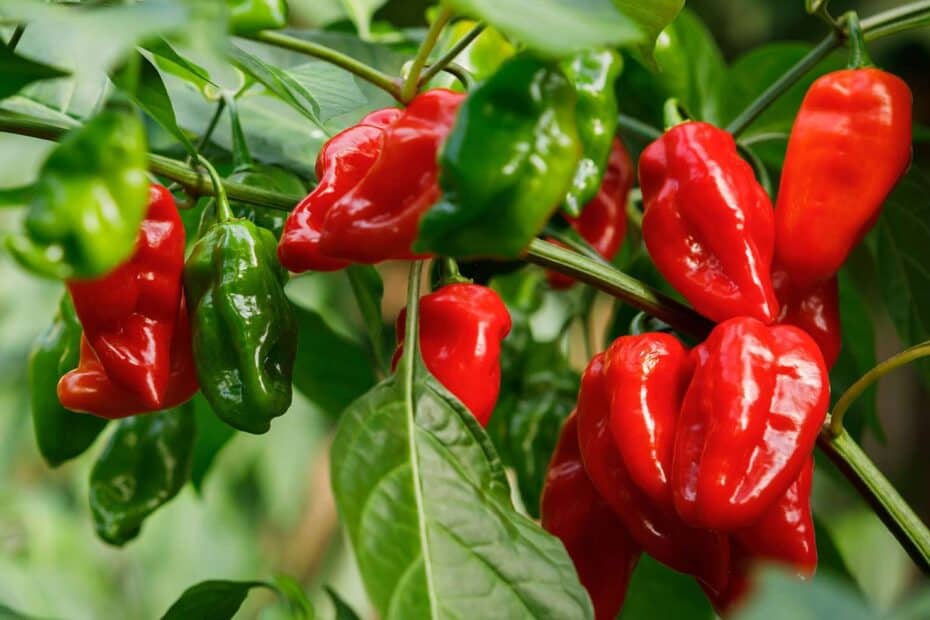Are you a gardener in the MidAtlantic who is eager to grow your own tasty, healthy vegetables? This region—including Delaware, Maryland, New Jersey, Pennsylvania, Virginia, West Virginia, and parts of New York—boasts a diverse climate, generous rainfall, and countless gardeners who love to get their hands dirty. Whether you’re a city dweller with raised beds or a rural grower with rows of soil, knowing the best vegetables to grow in the MidAtlantic States is key to a thriving and productive home garden.
In this comprehensive guide, you’ll discover:
- Which vegetables thrive in the MidAtlantic’s unique climate
- Planting and harvesting times for maximum yield
- Pro tips on soil prep, pest management, and companion planting
- Regional quirks and how to overcome them
- How to enjoy a harvest from early spring to late fall
Ready to start your vegetable garden or level up your yields this season? Read on to learn about the best vegetables for the MidAtlantic, and don’t forget to check out the gorgeous images to inspire your next planting!
Why the MidAtlantic Region is a Vegetable Gardener’s Paradise
The MidAtlantic’s four seasons, moderate humidity, ample rainfall, and fertile soils offer an excellent environment for cultivating a range of vegetables. Here are some advantages:
- Long Growing Season: Most areas enjoy a 170–220 day frost-free period, allowing for multiple plantings.
- Moderate Winters: Overwintering certain greens and root crops is possible with minimal protection.
- Consistent Rain: Ample rainfall reduces supplemental watering, though summer droughts can occur.
- Diverse Soil Types: From loamy river valleys to clay uplands, you can amend soil to suit almost any crop.
- Thriving Local Communities: Many farmers’ markets, seed swaps, and garden clubs mean expert advice is always accessible.
However, pests like deer, groundhogs, and insect infestations can be more common here, so prepared gardeners have the best success.
When to Plant: Understanding Frost Dates and Timing
Before you put seeds in the ground, know your area’s average last spring and first fall frost dates. In the MidAtlantic region, these generally fall between:
- Last Spring Frost: Early April (southern VA/DC) to early May (western PA, NY, or the mountains)
- First Fall Frost: Late October (coastal NJ/MD/VA) to early October (higher elevations)
Use these windows to plan:
- Cool-Season Crops: Plant in early spring and again in late summer for fall harvest. Think peas, leafy greens, root crops.
- Warm-Season Crops: Wait until after the last frost for tomatoes, peppers, squash, etc.
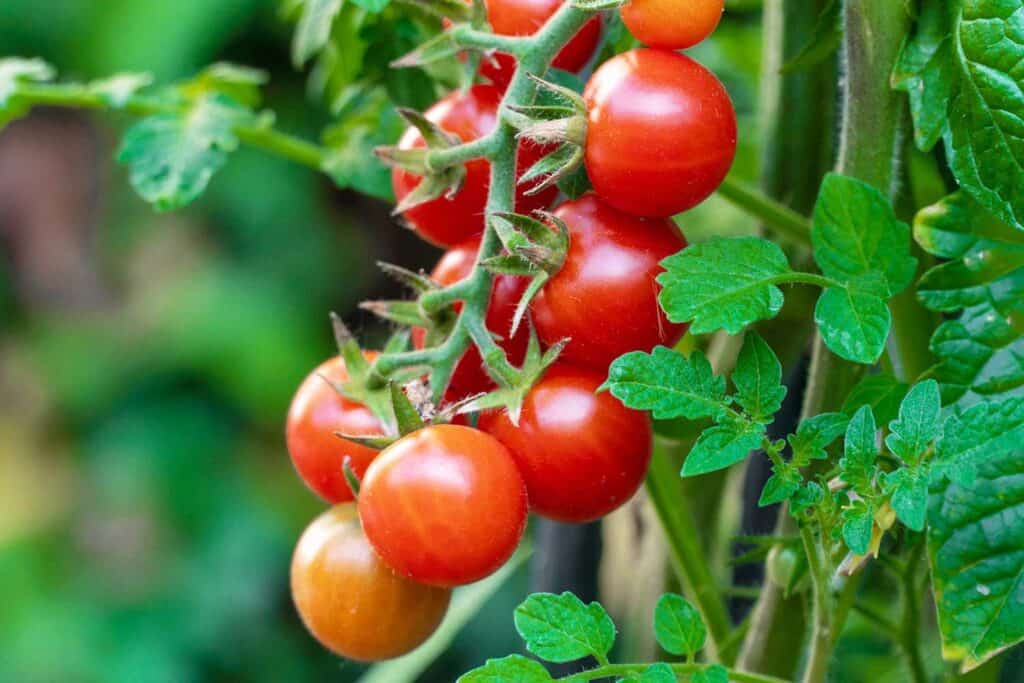
Top 12 Best Vegetables to Grow in the MidAtlantic States
These tried-and-true performers offer reliability, high yields, and great taste. For each, you’ll find planting details and regional specific tips.
1. Tomatoes
No MidAtlantic garden is complete without lush vines of juicy tomatoes.
- Best Varieties: ‘Celebrity’, ‘Brandywine’, ‘Cherokee Purple’, ‘Roma’, cherry and grape types for quick harvests
- Planting: Start seedlings indoors 6–8 weeks before the last frost. Transplant outdoors after all danger of frost.
- Site & Soil: Full sun (at least 6 hours daily), well-drained, loamy soil enriched with compost.
- Pro Tip: Stake or cage plants; mulch to conserve moisture. Watch for blight during humid periods and remove lower foliage to increase airflow.
2. Peppers (Bell & Hot)
Sweet or spicy, peppers bring vibrant color and taste to your garden.
- Best Varieties: ‘California Wonder’ (bell), ‘King Arthur’, ‘Jalapeño’, ‘Cayenne’, ‘Lunchbox Snack’
- Planting: Start seeds indoors like tomatoes for a strong head start, or purchase healthy seedlings. Wait until soil is warm (mid–late May).
- Site: Full sun, fertile and slightly acidic soil.
- Pro Tip: Peppers love heat; black plastic mulch can help warm soil. Provide regular, even watering to prevent blossom end rot.
3. Lettuce & Salad Greens
Quick, easy, and continuous, greens are a foundation for spring and fall gardens.
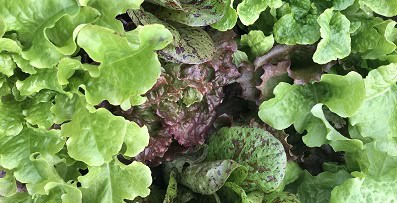
Caption: Mixed lettuce and salad greens thrive in cool spring and fall temperatures.
- Best Varieties: Baby leaf mixes, romaine (‘Parris Island Cos’), butterhead (‘Buttercrunch’), arugula, spinach, mizuna.
- Planting: Sow directly as soon as soil is workable, successively every 2–3 weeks for a non-stop harvest. Repeat for a fall crop as temperatures cool.
- Site: Partially shaded beds extend the season. Fertile, moisture-retentive soil is best.
- Pro Tip: Use shade cloth or plant in the shadow of taller crops to slow bolting in hot summers.
4. Cucumbers
Cucumbers are prolific and well-suited to the region’s summer warmth and rainfall.
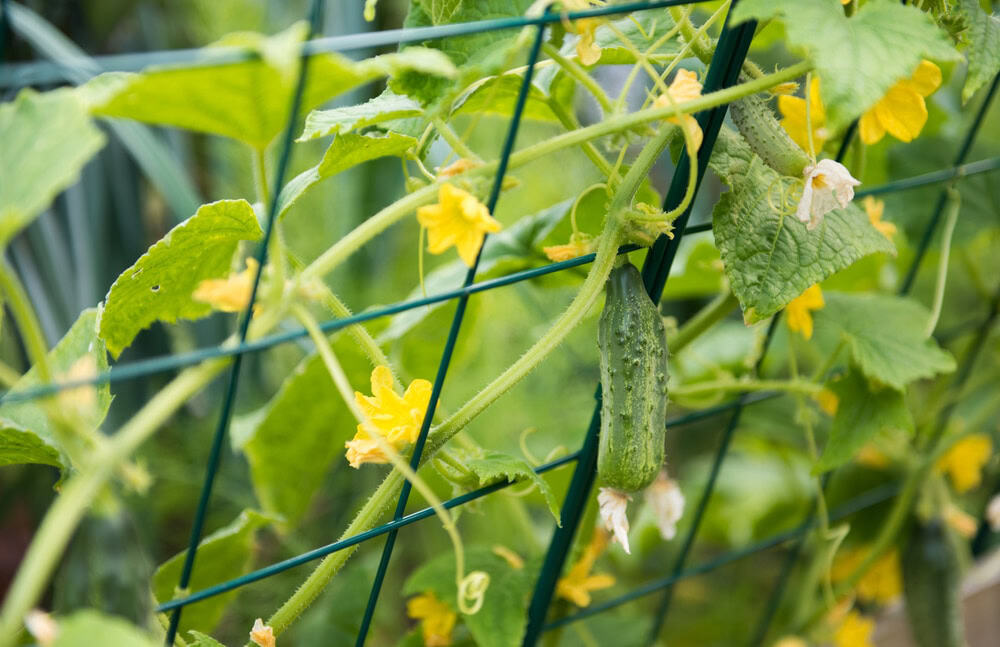
Caption: Trellised cucumbers grow upward, saving space and reducing disease.
- Best Varieties: ‘Marketmore 76’, ‘Straight Eight’, pickling types, small bush varieties for containers.
- Planting: Direct sow after soil warms (late May–June), or transplant for earlier harvests.
- Site: Full sun, well-drained, humus-rich soil. Use trellises for vining varieties to save space and reduce disease.
- Pro Tip: Consistent moisture is key—mulch to keep soil cool and prevent bitter fruit.
5. Green Beans (Bush & Pole)
Beans deliver generous yields with little fuss, making them a top MidAtlantic pick.
- Best Varieties: ‘Provider’, ‘Blue Lake’, ‘Kentucky Wonder’, ‘Dragon Tongue’ (for splashy color)
- Planting: Direct sow after frost danger has passed and soil is >60°F; succession sow every 2–3 weeks until midsummer.
- Site: Full sun, average soil. Support pole beans with sturdy stakes or netting.
- Pro Tip: Harvest regularly to encourage longer production and prevent beans from becoming tough.
6. Carrots
Carrots do especially well in the cool soils of spring and fall.
- Best Varieties: ‘Nelson’, ‘Bolero’, ‘Danvers’, ‘Nantes’, ‘Scarlet Nantes’, mini-types for containers
- Planting: Direct sow early, 2–4 weeks before last frost. Thin seedlings for straight roots.
- Site: Loose, sandy, or loamy soil, free from stones. Raised beds yield the best results.
- Pro Tip: Cover newly planted seeds with row cover to protect from drying out and carrot rust fly.
7. Summer Squash & Zucchini
If you have space, these prolific growers will fill your table all summer.
- Best Varieties: ‘Black Beauty’, ‘Grey Zucchini’, ‘Pattypan’, ‘Costata Romanesco’
- Planting: Direct sow after danger of frost or start indoors and transplant carefully.
- Site: Full sun, fertile soil. Give plants plenty of space (2–3 feet apart).
- Pro Tip: Harvest when fruits are young and tender; larger squash can get watery and seedy.
8. Kale
A cold-hardy, dependable staple for salads and sautés.
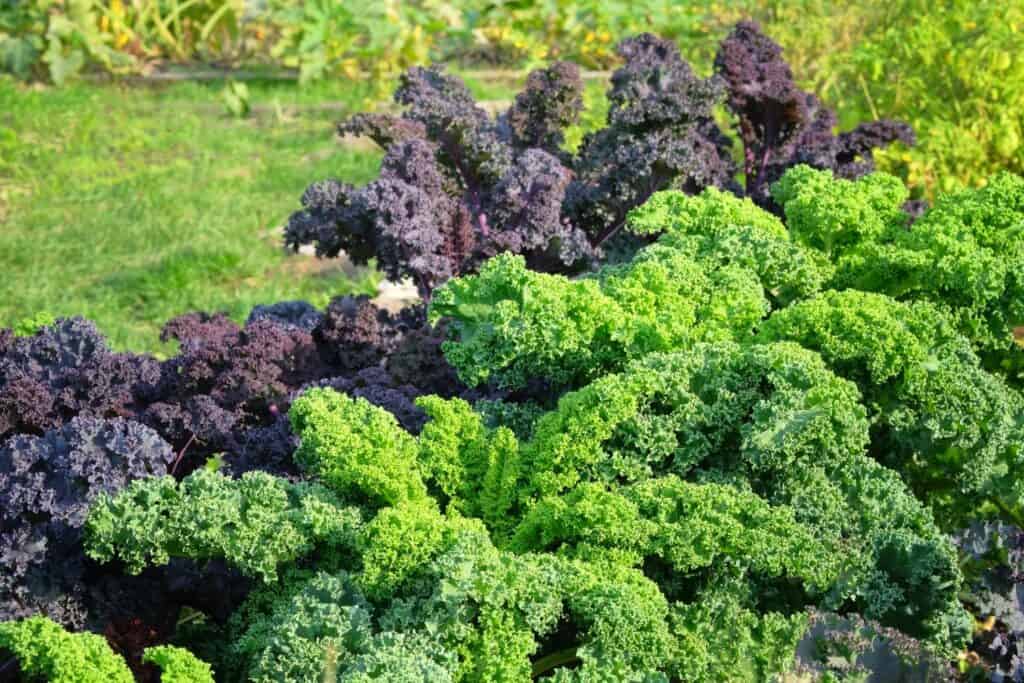
Caption: Kale leaves withstand both spring chills and autumn frost.
- Best Varieties: ‘Lacinato’ (Dino), ‘Winterbor’, ‘Red Russian’, ‘Vates’
- Planting: Sow directly in early spring or late summer for fall crops. Or start transplants indoors.
- Site: Full sun or light shade; tolerates various soils.
- Pro Tip: Frost actually sweetens kale’s flavor, so late-fall crops are especially tender.
9. Cabbage & Broccoli
Members of the brassica family excel in cool, moist MidAtlantic springs and falls.
- Best Varieties: ‘Stonehead’, ‘Early Jersey Wakefield’ (cabbage); ‘Packman’, ‘Green Magic’ (broccoli)
- Planting: Start seeds indoors or buy healthy transplants. Plant out in early spring or late summer.
- Site: Full sun, rich fertile soils with plenty of compost.
- Pro Tip: Watch for cabbage worms—cover with row cover or hand-pick pests. Water consistently to avoid splitting.
10. Peas (Snap, Snow, Shelling)
Peas love the chilly soils of early spring and keep producing until summer heat arrives.

Sugar snap peas and snow peas thrive in the cool, moist soils of the MidAtlantic spring
- Best Varieties: ‘Sugar Snap’, ‘Super Sugar Snap’, ‘Oregon Sugar Pod’ (snow pea), ‘Little Marvel’ (shelling)
- Planting: Direct sow peas as soon as soil can be worked (usually mid-March to early April). For a fall crop, sow in late summer, 8–10 weeks before first frost.
- Site: Full sun to partial shade; well-drained, fertile soil. Support climbing varieties with trellises or netting.
- Pro Tip: Mulch soil to keep roots cool and increase yields. Water consistently, especially as pods begin to fill.
11. Onions & Garlic
These alliums perform well and can be overwintered for an early summer harvest.
- Best Varieties: ‘Walla Walla’, ‘Candy’ (onion), ‘Red Creole’; softneck garlic for mild winters (though hardneck varieties also produce well)
- Planting: Start onions from sets or transplants in early spring. Plant garlic cloves in fall (late October/early November).
- Site: Full sun, fertile and well-drained soil rich with organic matter.
- Pro Tip: Keep alliums weed-free; mulch suppresses weeds and conserves moisture. Harvest onions when tops lay over naturally.
12. Sweet Corn
If you have space, sweet corn is rewarding and delicious—especially when harvested just minutes before eating!
- Best Varieties: ‘Silver Queen’ (a classic for the region), ‘Honey Select’, ‘Peaches & Cream’, ‘Bodacious’
- Planting: Direct sow after last frost when soil warms. Plant in blocks, not rows, to ensure good pollination.
- Site: Full sun and fertile, well-drained soil. Amend heavily with compost or organic fertilizer.
- Pro Tip: Water during tasseling and silking for plump kernels. Monitor for pests like corn earworm and raccoons.
Other Noteworthy Vegetables for the MidAtlantic
- Radishes: Fast-maturing, they thrive in early spring and fall and are great for interplanting with slower crops.
- Swiss Chard: Heat- and cold-tolerant, and provides greens all summer long.
- Eggplant: Performs best in warmer, southern parts of the region. Try compact varieties if summers in your area are shorter.
- Beets: Consistent performers in all soils; both roots and tops are edible.
- Turnips & Rutabaga: Cool weather roots that can be harvested late into the season.
Regional Challenges & Solutions
Every region has its quirks; the MidAtlantic is no exception.
- Humidity & Fungal Disease: Airflow is essential. Space plants generously, prune lower leaves (especially on tomatoes and squash), and use mulch. Opt for disease-resistant varieties.
- Deer & Wildlife: Install sturdy fencing or use repellents; floating row covers help with smaller pests like cabbage worms and flea beetles.
- Heavy Soils: Raised beds are beneficial, especially in clay-rich or compacted soils. Amend with organic matter annually.
- Hot, Dry Spells: While rain is generally plentiful, mulch and soaker hoses help during midsummer dry periods.
- Weeds: Beds prepped with deep mulch or landscape fabric reduce weed pressure.
Organic and Sustainable Gardening in the MidAtlantic
Organic methods pair beautifully with the MidAtlantic’s climate. Here’s how:
- Compost: Make use of kitchen scraps, fall leaves, and grass clippings to boost soil health.
- Crop Rotation: Rotate plant families to avoid soil-borne diseases, especially for tomatoes, peppers, and brassicas.
- Cover Crops: Plant clover, vetch, or rye in empty beds to build organic matter and fix nitrogen.
- Pollinator Support: Interplant flowers (marigolds, nasturtiums, zinnias, sunflowers) with vegetables to attract bees, butterflies, and beneficial insects.
Succession Planting for Maximum Harvest
The long MidAtlantic season means you can plant in waves:
- Spring: Lettuce, spinach, peas, radishes, carrots, beets, brassicas
- Summer: Tomatoes, peppers, beans, squash, cucumbers, corn, eggplant
- Fall: Greens (kale, lettuce, arugula), roots (carrots, turnips), late brassicas, peas
Make a planting schedule based on your local frost dates to keep your garden productive from April to November!
Container and Small-Space Gardening in the MidAtlantic
Don’t have vast raised beds or rows? You can still grow almost all the vegetables above in:
- Pots or Grow Bags: Perfect for tomatoes, peppers, lettuce, and bush beans.
- Vertical Supports: Trellis cucumbers, pole beans, and even squash upward to save ground space.
- Interplanting: Tuck fast-growing greens between slow-growing tomatoes or peppers.
- Herb Gardens: Basil, parsley, cilantro, dill, and chives all thrive in the MidAtlantic climate and are perfect for container gardens.
Best Vegetables to Grow in the MidAtlantic States FAQs
Q: What is the best month to start planting vegetables in the MidAtlantic? A: For most areas, cool-season crops can be planted outdoors in March and April, while warm-season crops should go out after the last expected frost—usually from late April to mid-May depending on your exact location.
Q: How do I protect my crops from deer and groundhogs? A: A 6–8 foot fence is the best defense against deer. For groundhogs, either bury fencing 12” deep or use raised beds with hardware cloth bottoms. Repellents and motion-activated sprinklers add another layer of protection.
Q: Which vegetables can I grow in the shade? A: Leafy greens like lettuce, spinach, kale, Swiss chard, and some herbs will tolerate partial shade, especially in the heat of summer.
Q: Can I plant a fall garden? A: Absolutely! Start seeds for fall crops in mid- to late summer—try kale, spinach, lettuce, broccoli, radishes, and carrots for extended harvests.
A Seasonal Planting Guide for the MidAtlantic
To help you plan, here’s a rough seasonal outline:
Early Spring (March–April)
- Lettuce, spinach, arugula
- Peas, beans
- Radishes, carrots, beets
- Onion, leek, shallot sets
- Broccoli, cabbage, kale (transplants)
Late Spring – Early Summer (May–June)
- Tomatoes, peppers, eggplants
- Beans (bush and pole)
- Corn, squash, cucumbers, melons
- Sweet potatoes
Summer – Early Fall (July–August)
- Sow for fall: carrots, beets, late kale, chard, lettuce, broccoli, peas
- Continue to harvest warm-season crops
Fall (September–November)
- Harvest late root crops and leafy greens
- Plant garlic for next year
- Prepare beds with compost and mulch
Four-Season Gardening: Extend Your Harvest
Take advantage of the MidAtlantic’s moderate winters and embrace season extension:
- Cold Frames & Row Covers: Protect sensitive crops from frost.
- High Tunnels/Hoop Houses: Grow hardy greens like kale and spinach well into winter.
- Mulching: Keeps soil warmer and reduces temperature fluctuations.
With the right protection, you can harvest something almost every month of the year!
Conclusion: Creating Your Best MidAtlantic Vegetable Garden
The MidAtlantic region gives gardeners an incredible palette of vegetables to grow, from juicy tomatoes and crunchy snap peas to sweet carrots and robust kale. By choosing the best vegetables for your zone, planning around frost dates, and embracing smart gardening practices, you can enjoy bountiful harvests nearly year-round.
Key takeaways:
- Focus on regionally-proven crops and disease-resistant varieties
- Amend your soil for optimal fertility and drainage
- Practice crop rotation, succession planting, and use season extenders
- Prepare for common challenges, but enjoy the diversity and bounty your region can provide
With these strategies and choices, your garden will not only provide delicious food for your table but also joy, connection, and beauty for your household and community.
Whether you’re planting your first seeds or planning your tenth garden, the secret to success is understanding your region and celebrating its unique strengths. With the best vegetables to grow in the MidAtlantic States on your side, you’ll reap rich rewards in every season. Happy gardening!
